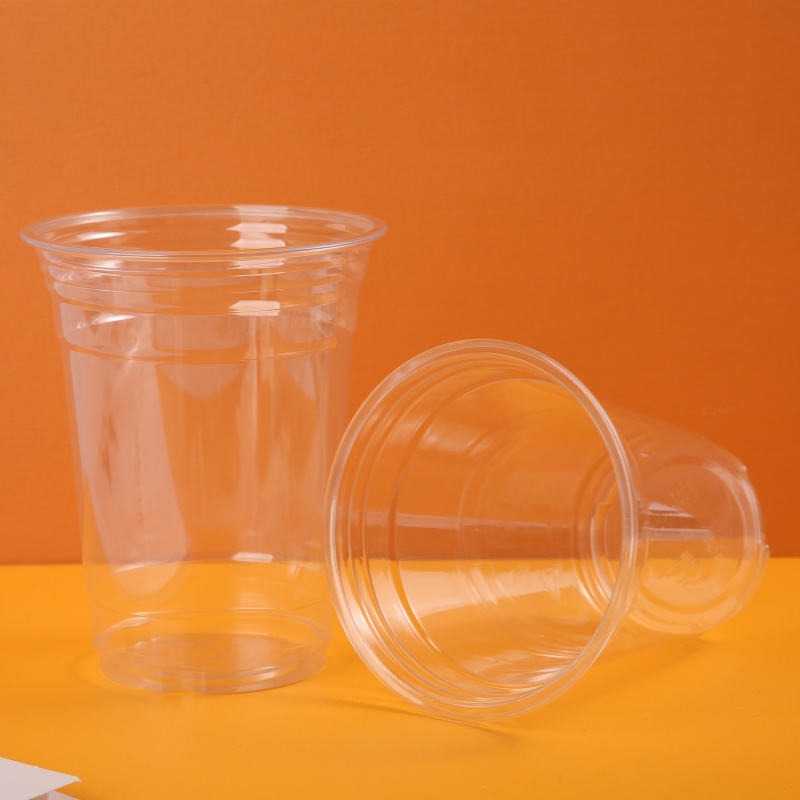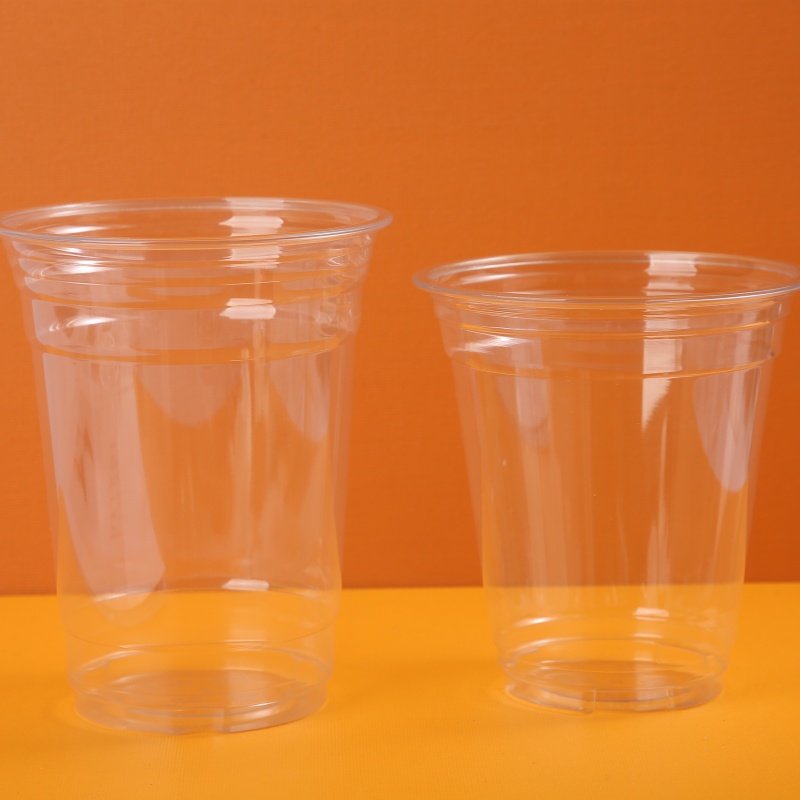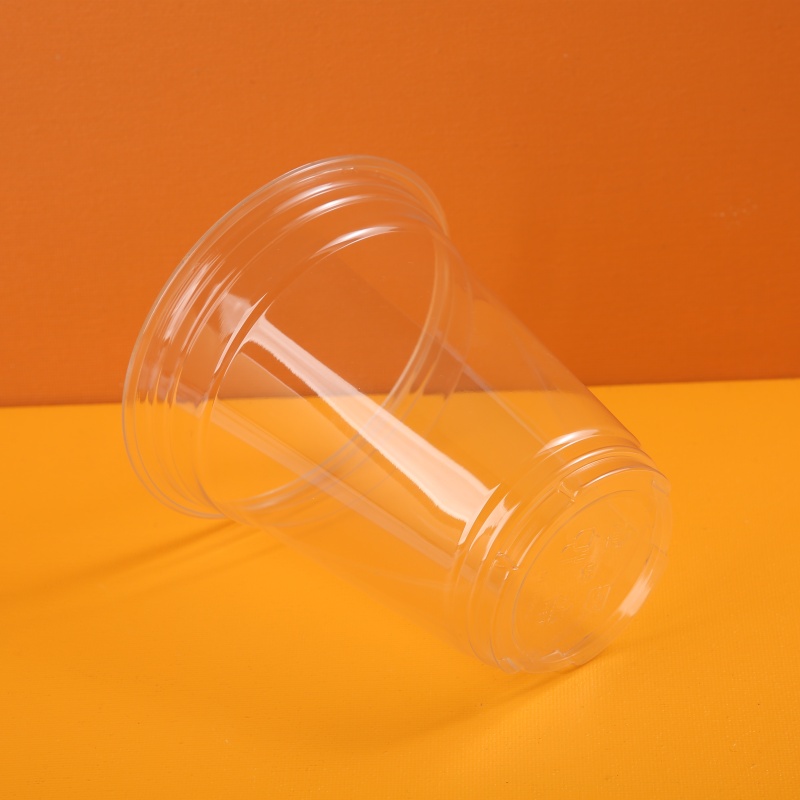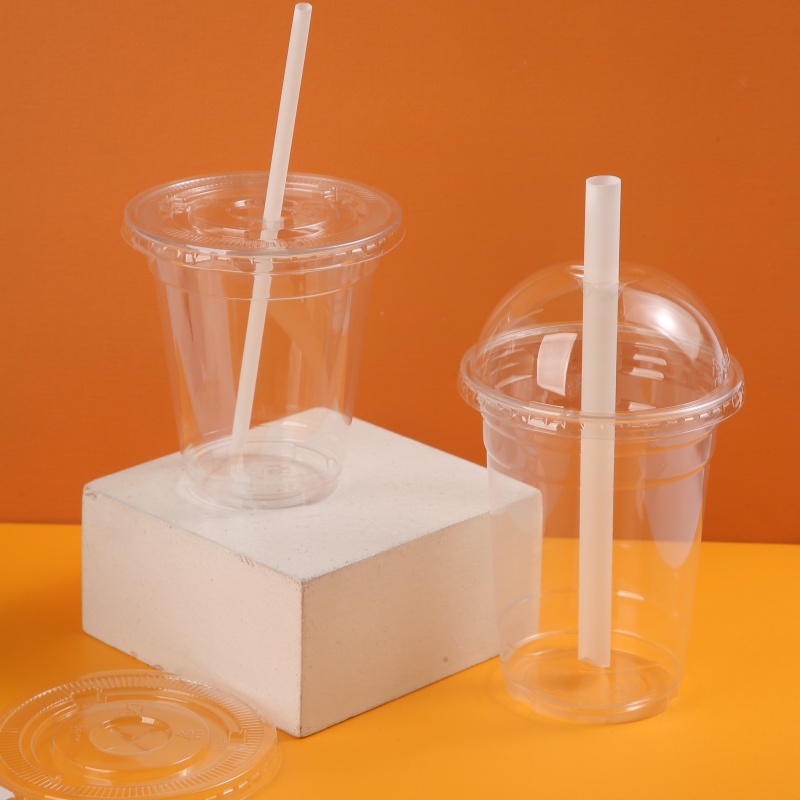PET (Polyethylene Terephthalate) is a widely used plastic material in the packaging industry. With increasing global environmental awareness, the future market prospects and environmental impact of PET plastics are receiving considerable attention.
The Past of PET Material
In the mid-20th century, the remarkable PET polymer, Polyethylene Terephthalate, was first invented. The inventors sought a material that could be used for various commercial purposes. Its lightweight, transparency, and robustness made it an ideal choice for widespread applications. Initially, PET was primarily used in the textile industry as the raw material for synthetic fibers (polyester). Over time, the application of PET gradually expanded into the packaging sector, especially in beverage bottles and food packaging.
The advent of PET bottles in the 1970s marked its rise in the packaging industry.PET bottles and PET drinking cup, with their lightweight, high strength, and good transparency, quickly replaced glass bottles and metal cans, becoming the preferred material for beverage packaging. With continuous advancements in production technology, the cost of PET materials gradually decreased, further promoting its widespread application in the global market.

The Rise and Advantages of PET
The rapid rise of PET material is due to its numerous advantages. First, PET has excellent physical properties, such as high strength, wear resistance, and chemical corrosion resistance, making it perform well in packaging and industrial fields. Secondly, PET material has good transparency and luster, giving it an excellent visual effect in applications like beverage bottles and food containers.
Moreover, the recyclability of PET material is also a significant advantage. PET plastics can be recycled and reused through physical or chemical methods to produce recycled PET (rPET) materials. rPET materials can not only be used to produce new PET bottles but also be used in textiles, construction, and other fields, significantly reducing the environmental impact of plastic waste.
Environmental Impact
Despite the many advantages of PET materials, their environmental impact cannot be ignored. The production process of PET plastics consumes a large amount of petroleum resources and generates some greenhouse gas emissions. Additionally, the degradation rate of PET plastics in the natural environment is very slow, often requiring hundreds of years, making them a major source of plastic pollution.
However, compared to other types of plastics, the recyclability of PET gives it a certain advantage in environmental protection. Statistics show that about 26% of PET plastics are recycled globally, a proportion much higher than other plastic materials. By increasing the recycling rate of PET plastics, their negative impact on the environment can be effectively reduced.

Environmental Impact
Despite the many advantages of PET materials, their environmental impact cannot be ignored. The production process of PET plastics consumes a large amount of petroleum resources and generates some greenhouse gas emissions. Additionally, the degradation rate of PET plastics in the natural environment is very slow, often requiring hundreds of years, making them a major source of plastic pollution.
However, compared to other types of plastics, the recyclability of PET gives it a certain advantage in environmental protection. Statistics show that about 26% of PET plastics are recycled globally, a proportion much higher than other plastic materials. By increasing the recycling rate of PET plastics, their negative impact on the environment can be effectively reduced.
The Environmental Impact of PET Disposable Cups
As a common food and beverage packaging material, the environmental impact of PET disposable cups is also a significant concern. Although PET beverage cups and PET fruit tea cups have advantages such as being lightweight, transparent, and aesthetically pleasing, their extensive use and improper disposal can lead to serious environmental issues.
The degradation rate of PET disposable cups in the natural environment is extremely slow. If not recycled, they can pose long-term harm to ecosystems. Additionally, PET disposable cups may pose certain health risks during use, such as the release of harmful substances under high-temperature conditions. Therefore, promoting the recycling and reuse of PET disposable cups to reduce their environmental impact is an urgent issue that needs to be addressed.

Other Applications of PET Plastics
Apart from beverage bottles and food packaging, PET plastics are widely used in other fields. In the textile industry, PET, as the main raw material for polyester fibers, is extensively used in producing clothing and home textiles. In the industrial sector, PET plastics, due to their excellent physical properties, are used in manufacturing electronic components and automotive parts.
Furthermore, PET materials have certain applications in the medical and construction fields. For example, PET can be used to produce medical devices and pharmaceutical packaging due to its good biocompatibility and safety. In the construction industry, PET materials can be used to produce insulation materials and decorative materials, known for their durability and environmental friendliness.
Frequently Asked Questions About PET Cups
1. Are PET cups safe?
PET cups are safe under normal usage conditions and comply with relevant standards for food contact materials. However, they may release trace amounts of harmful substances under high-temperature conditions, so it is recommended to avoid using PET cups in high-temperature environments.
2. Are PET cups recyclable?
PET cups are recyclable and can be processed into recycled PET materials through physical or chemical methods. However, the actual recycling rate is limited by the completeness of the recycling system and consumer awareness.
3. What is the environmental impact of PET cups?
The degradation rate of PET cups in the natural environment is slow, potentially causing long-term impacts on ecosystems. Increasing the recycling rate and promoting the use of recycled PET materials are effective ways to reduce their environmental impact.
The Future of PET Material
With increasing global environmental awareness and continuous technological advancements, PET material will face new development opportunities and challenges in the future. On the one hand, with the continuous maturity of recycling technology, the recycling rate of PET materials is expected to further improve, thereby reducing their negative environmental impact. On the other hand, the research and application of bio-based PET (Bio-PET) materials are also advancing, providing new directions for the sustainable development of PET materials.
In the future, PET beverage cups, PET fruit tea cups, and PET disposable cups will pay more attention to environmental performance and health safety, promoting sustainable development. Under the global green development background, the future of PET materials is full of hope and possibilities. Through continuous innovation and effort, PET plastics are expected to find a balance between meeting future market demand and environmental protection, becoming a model for green packaging.
The development of PET plastics must focus not only on market demand but also on environmental impact. By increasing the recycling rate, promoting the application of recycled PET materials, and advancing the research and development of bio-based PET, PET plastics are expected to find a new balance between future market demands and environmental protection, meeting dual needs.
MVIECOPACK can provide you with any custom cornstarch food packaging and sugarcane food box packaging or any recyclable paper cups you want. With 12 years of export experience, MVIECOPACK has exported to over 100 countries. You can contact us anytime for customization and wholesale orders. We will respond within 24 hours.
Post time: Jul-19-2024











